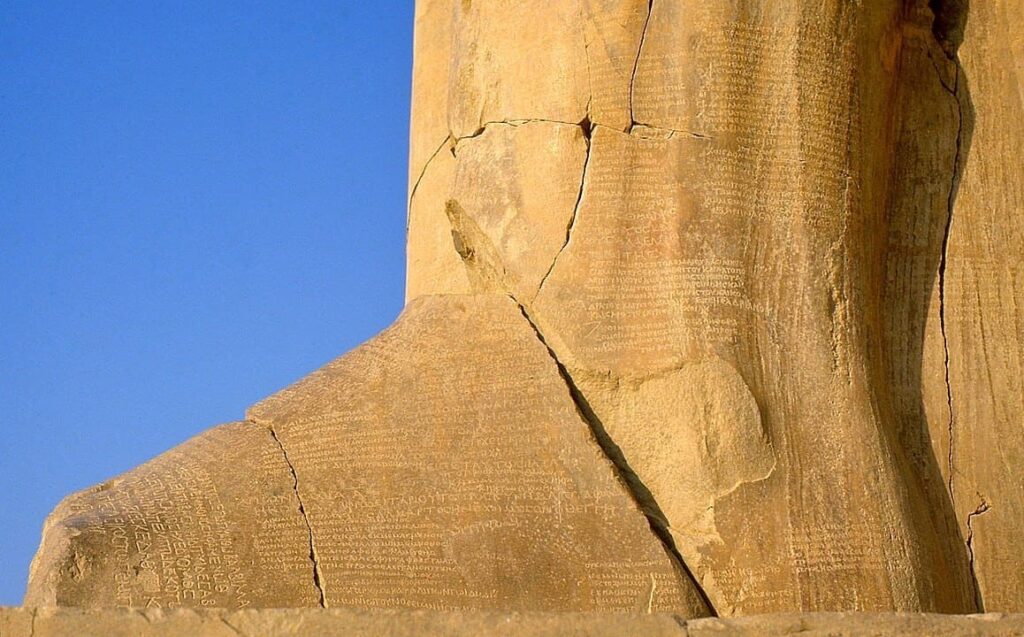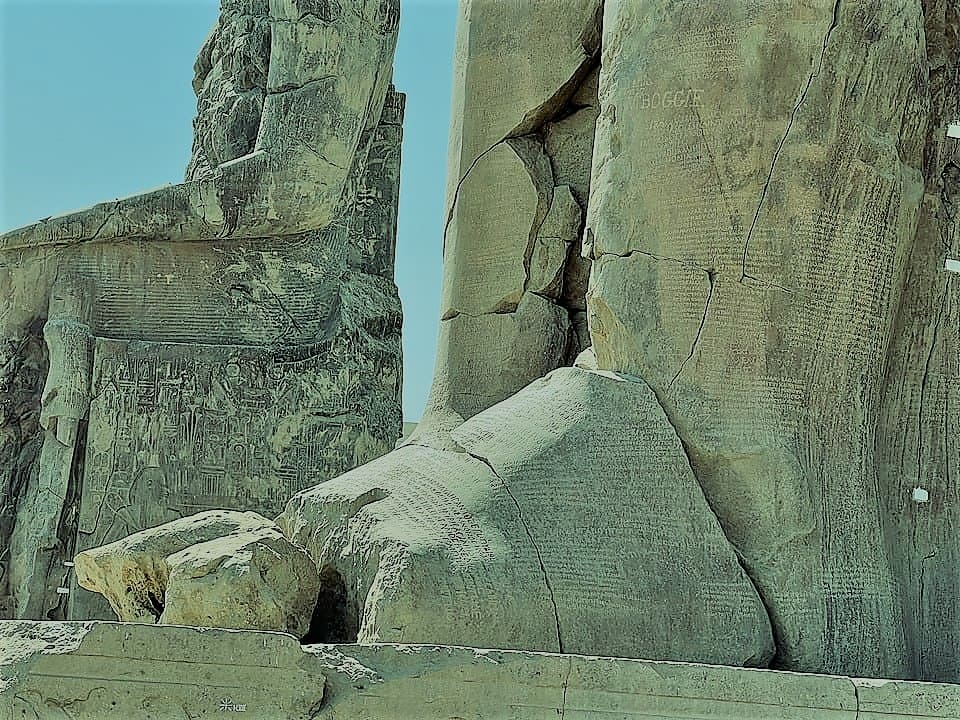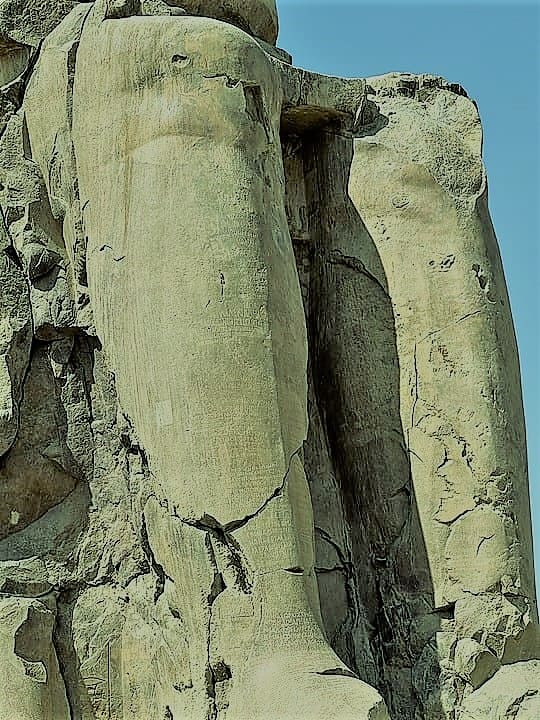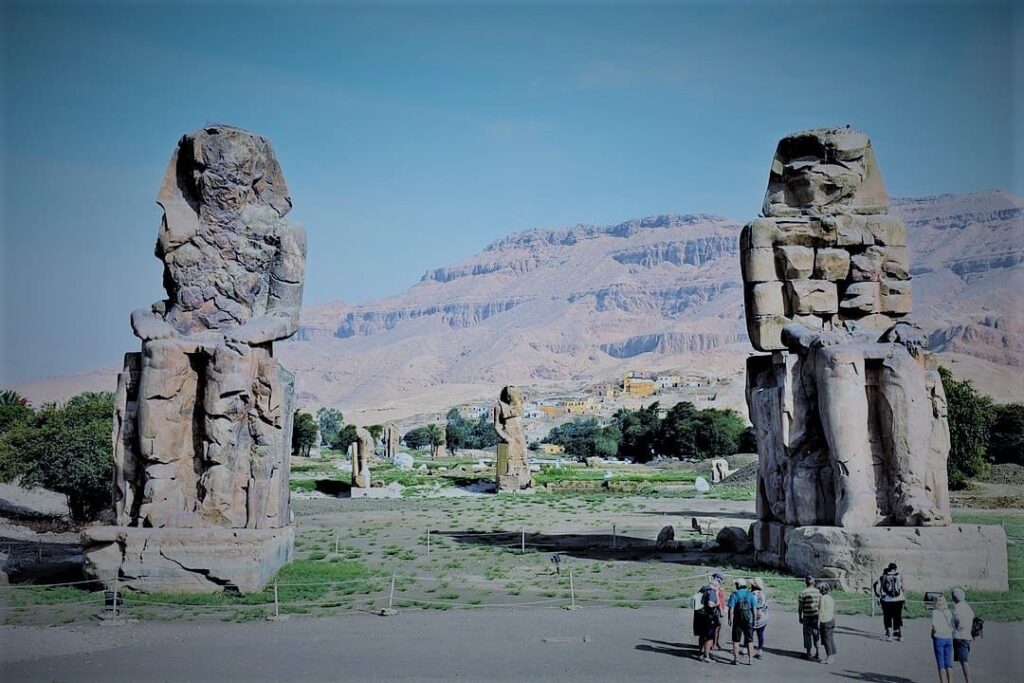
About
The Colossi of Memnon (Arabic: el-Colossat or es-Salamat) are two huge stone statues of Pharaoh Amenhotep III that stand in front of the ruined mortuary temple of Amenhotep III, the largest temple in the Theban necropolis. They stand since 1350 BC. C., and were known to the ancient Greeks and Romans as well as to early travelers and modern Egyptologists. The statues contain 107 Greek and Latin inscriptions from the Roman era, dated between 20 and 250 AD. c.; Many of these inscriptions on the northernmost statue refer to the Greek mythological king Memnon, whom the statue was then mistaken to represent. the entire Theban necropolis as Memnonium.
Description
The Colossi of Memnon (Arabic: el-Colossat or es-Salamat) are two giant stone statues of Pharaoh Amenhotep III that stand in front of the ruined mortuary temple of Amenhotep III, the largest temple in the Theban necropolis. The statues are made of blocks of quartzite sandstone quarried at el-Gabal el-Ahmar (near modern-day Cairo) and transported 675 km (420 miles) overland to Thebes (Luxor). The Colossi’s original function was to stand guard at the entrance to the memorial (or mortuary) temple of Amenhotep: a massive structure built during the Pharaoh’s lifetime, where he resided both before and after his departure from this world as god on earth worshiped.
Roman era inscriptions
The statues contain 107 Greek and Latin inscriptions from Roman times, dated between 20 and 250 AD; These inscriptions have enabled modern travelers to relate the statues to classical Greek and Latin literature.[3] Many of the inscriptions include the name «Memnon». They were first studied in detail by Jean-Antoine Letronne in his 1831 book La statue vocale de Memnon considérée dans ses rapports avec l’Égypte et la Grèce, and later cataloged in the second volume (1848) of his Recueil des inscriptions grecques et Latins de l’ Egypt.
earthquake factors
Shortly after its construction, the temple was destroyed by an earthquake recently estimated by the Armenian Institute of Seismology to be around 1200 BC. was dated. C., who only left the two huge colossi at the entrance. BC, after which they were partially rebuilt by the Roman authorities. These were the subject of extensive restorations and excavations by the Armenian-German archaeologist Hourig Sourouzian, who revealed that the complex consisted of three pylons, each containing colossal statues. while at the other end a rectangular temple complex consisted of a portico with columns.
You Can View Our Luxor Tours NowReason of named ?
The modern Arabic name is Kom el-Hatan, but it is commonly known by its Roman name as the Temple of Memnon. Memnon (whose name means ‘firm’ or ‘resolute’) is said to have been the son of Eos, goddess of the dawn, he was associated with colossi built several centuries earlier, due to the reported dawning of the northern ones statue (see below). known as the Colossus of Memnon. In the 19th century William of Wiveleslie Abney remarked that «(the Arabs called these statues ‘Shama’ and ‘Tama’, and when speaking of them together they called them Sanamât or Idols.
-
 Crucero por el Nilo de Asuán a Luxor ( 3 noches sin Abu Simbel )195.00 € – 499.00 €
Crucero por el Nilo de Asuán a Luxor ( 3 noches sin Abu Simbel )195.00 € – 499.00 € -
 Visita guiada al Museo de Luxor y al Museo de la Momificación0.00 € – 47.00 €
Visita guiada al Museo de Luxor y al Museo de la Momificación0.00 € – 47.00 € -
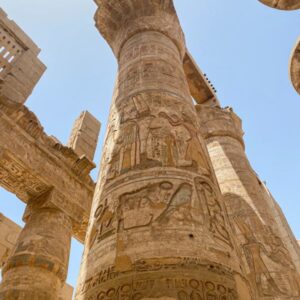 Templo de Karnak y Luxor en una visita guiada0.00 € – 55.00 €
Templo de Karnak y Luxor en una visita guiada0.00 € – 55.00 €

